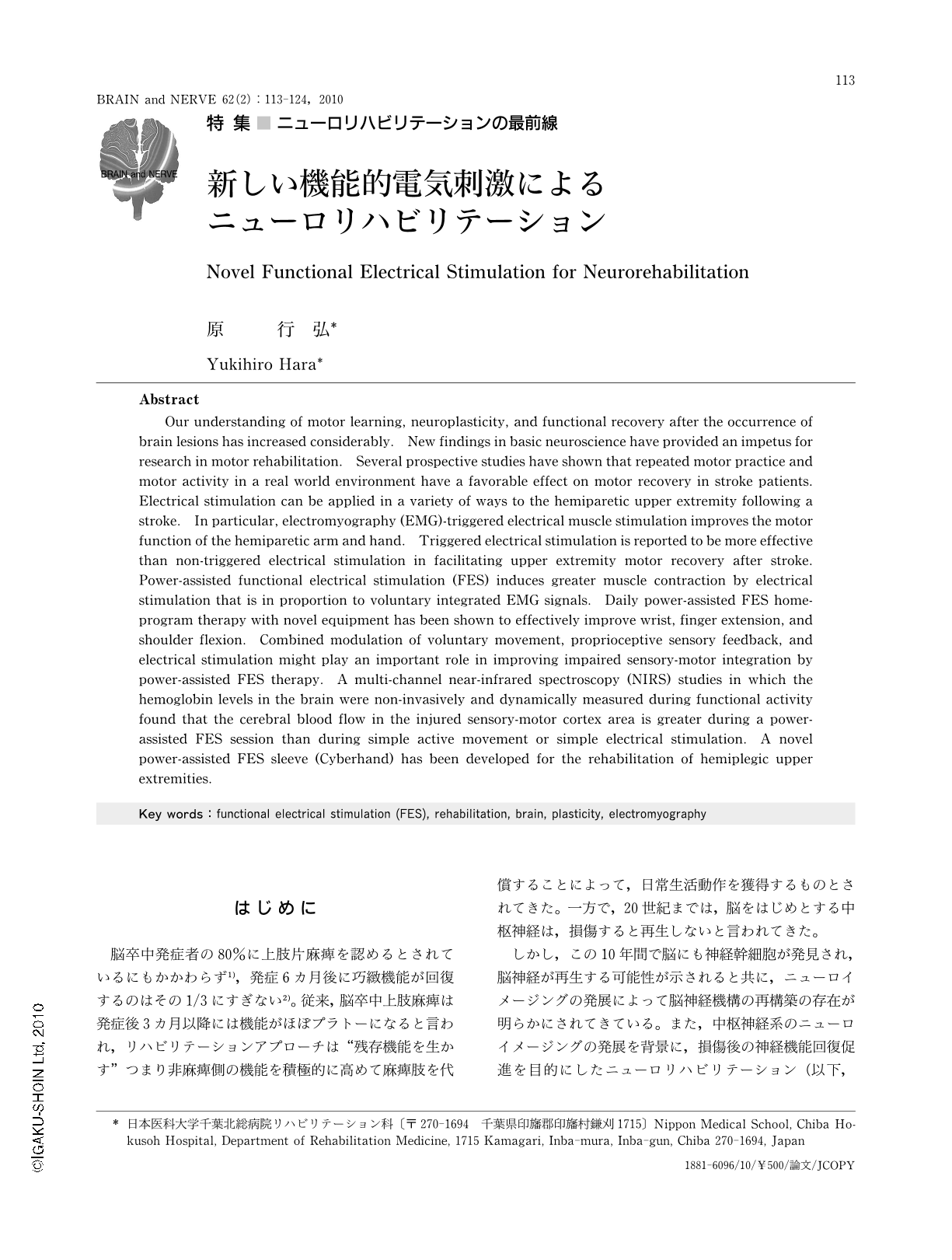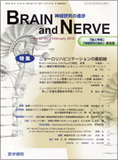Japanese
English
- 有料閲覧
- Abstract 文献概要
- 1ページ目 Look Inside
- 参考文献 Reference
はじめに
脳卒中発症者の80%に上肢片麻痺を認めるとされているにもかかわらず1),発症6カ月後に巧緻機能が回復するのはその1/3にすぎない2)。従来,脳卒中上肢麻痺は発症後3カ月以降には機能がほぼプラトーになると言われ,リハビリテーションアプローチは“残存機能を生かす”つまり非麻痺側の機能を積極的に高めて麻痺肢を代償することによって,日常生活動作を獲得するものとされてきた。一方で,20世紀までは,脳をはじめとする中枢神経は,損傷すると再生しないと言われてきた。
しかし,この10年間で脳にも神経幹細胞が発見され,脳神経が再生する可能性が示されると共に,ニューロイメージングの発展によって脳神経機構の再構築の存在が明らかにされてきている。また,中枢神経系のニューロイメージングの発展を背景に,損傷後の神経機能回復促進を目的にしたニューロリハビリテーション(以下,ニューロリハ)という概念が提唱されてきた。
ニューロリハとは,残存した神経システムをトレーニングによって賦活し,部分的に損傷した中枢神経を補完するという基本理念に基づいている。この基本理念に基づいて中枢神経の回復過程における脳の可塑性や神経ネットワークの再構築がニューロイメージング研究で確認されている。神経機構再構築の機序として(1)神経結合の再構成,(2)感覚-運動統合,(3)運動領域の皮質結合などが考えられており,近年のリハビリテーションは,脳の可塑性を促通することに焦点をあててきていると言える。
Abstract
Our understanding of motor learning,neuroplasticity,and functional recovery after the occurrence of brain lesions has increased considerably. New findings in basic neuroscience have provided an impetus for research in motor rehabilitation. Several prospective studies have shown that repeated motor practice and motor activity in a real world environment have a favorable effect on motor recovery in stroke patients. Electrical stimulation can be applied in a variety of ways to the hemiparetic upper extremity following a stroke. In particular,electromyography (EMG)-triggered electrical muscle stimulation improves the motor function of the hemiparetic arm and hand. Triggered electrical stimulation is reported to be more effective than non-triggered electrical stimulation in facilitating upper extremity motor recovery after stroke. Power-assisted functional electrical stimulation (FES) induces greater muscle contraction by electrical stimulation that is in proportion to voluntary integrated EMG signals. Daily power-assisted FES home-program therapy with novel equipment has been shown to effectively improve wrist,finger extension,and shoulder flexion. Combined modulation of voluntary movement,proprioceptive sensory feedback,and electrical stimulation might play an important role in improving impaired sensory-motor integration by power-assisted FES therapy. A multi-channel near-infrared spectroscopy (NIRS) studies in which the hemoglobin levels in the brain were non-invasively and dynamically measured during functional activity found that the cerebral blood flow in the injured sensory-motor cortex area is greater during a power-assisted FES session than during simple active movement or simple electrical stimulation. A novel power-assisted FES sleeve (Cyberhand) has been developed for the rehabilitation of hemiplegic upper extremities.

Copyright © 2010, Igaku-Shoin Ltd. All rights reserved.


